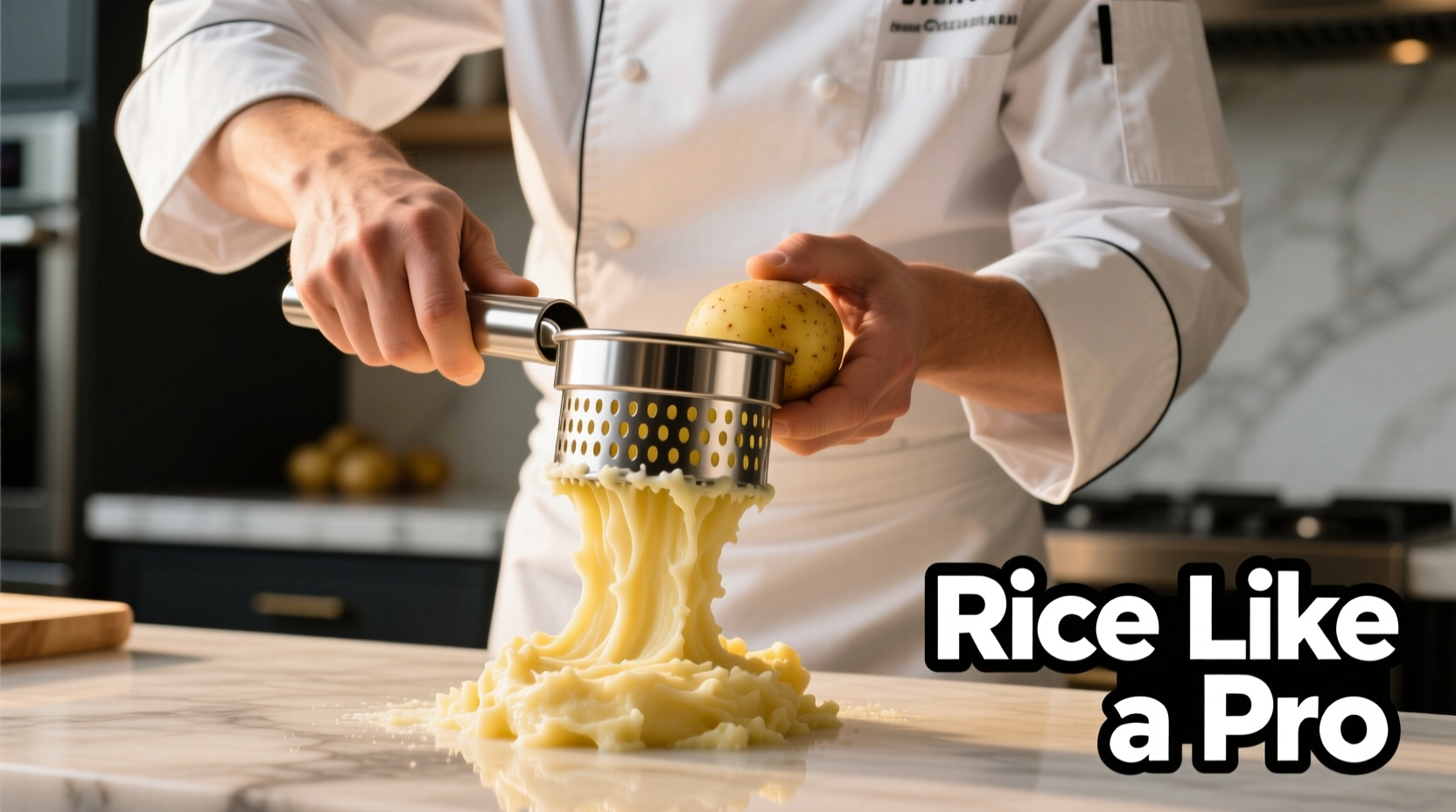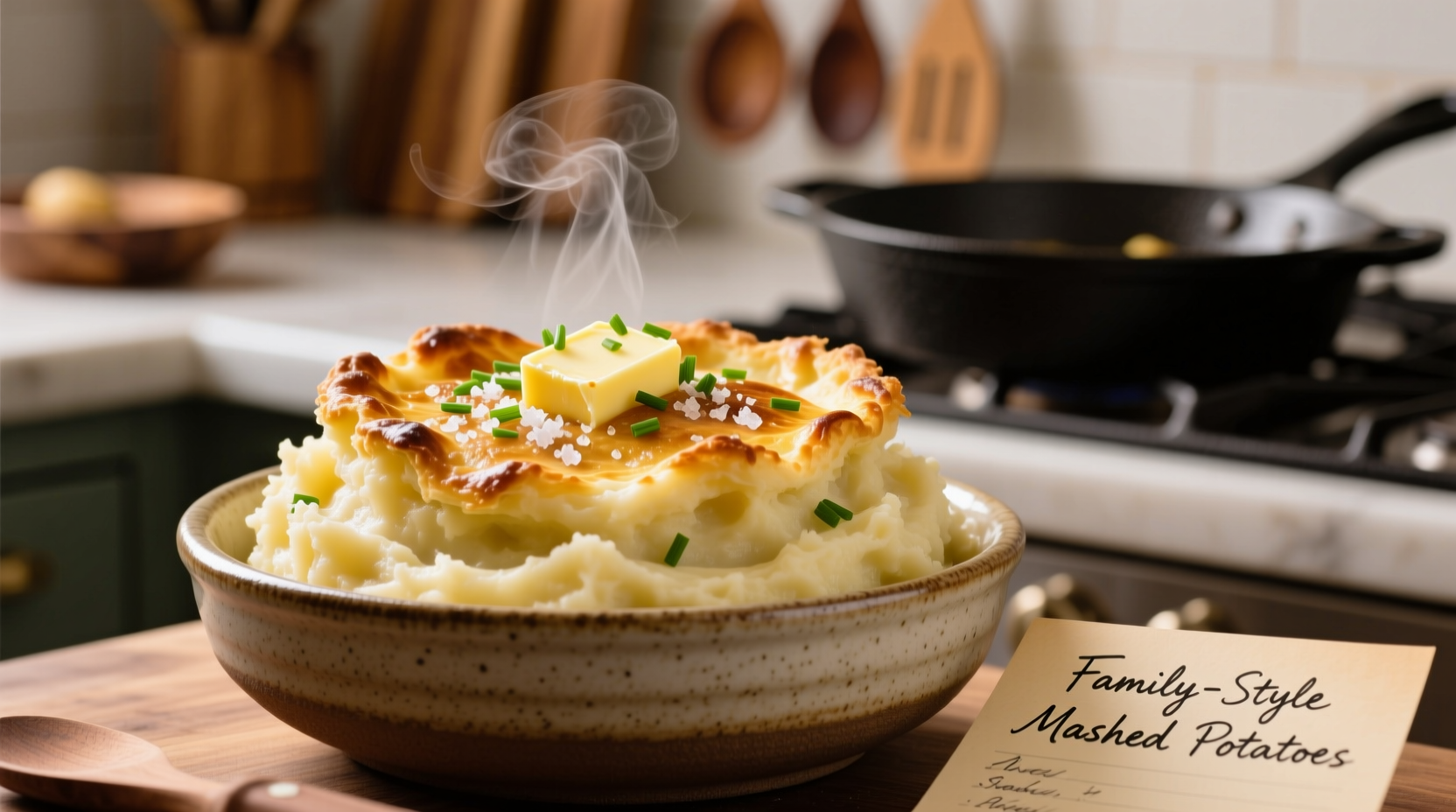The Science Behind Perfect Mashed Potatoes
Most home cooks struggle with mashed potatoes because they don't understand the simple food science involved. The key to creamy, flavorful mashed potatoes lies in starch management and temperature control. When potatoes cook, their starch granules absorb water and swell. Overworking releases too much starch, creating that dreaded gluey texture. Undercooking leaves you with lumps. The perfect balance creates fluffy yet creamy results that hold their shape without becoming gummy.
| Potato Variety | Starch Content | Best For | Texture Result |
|---|---|---|---|
| Russet (Idaho) | High | Classic fluffy mashed | Light, airy, absorbs butter well |
| Yukon Gold | Medium | Creamy restaurant-style | Naturally buttery, velvety texture |
| Red Potatoes | Low | Chunky mashed potatoes | Firm, holds shape, less creamy |
| Maris Piper | Medium-High | British-style mashed | Perfect balance of fluffiness and creaminess |
According to the USDA Nutrient Data Laboratory, Yukon Gold potatoes contain 20% more natural buttery flavor compounds than Russets, explaining their superior taste in creamy preparations. This scientific insight helps explain why professional chefs often prefer them for premium mashed potatoes despite Russets' popularity for fluffiness.
Essential Tools You Actually Need
Forget complicated gadgets—three simple tools make all the difference:
- Potato ricer (not a masher): Creates perfectly smooth texture without releasing excess starch
- Heavy-bottomed saucepan: Prevents scorching when warming dairy
- Rubber spatula: For gentle folding that maintains texture

5 Foolproof Mashed Potato Recipes
1. Classic Creamy Mashed Potatoes (The Foundation)
This perfect mashed potatoes recipe serves as your base for all variations. The critical detail most recipes miss? Warming your dairy before adding it to potatoes.
Ingredients
- 2.5 lbs Yukon Gold potatoes, peeled and cubed
- 1 cup whole milk or half-and-half, warmed
- ½ cup unsalted butter, softened
- 1 tsp kosher salt (plus more to taste)
- ¼ tsp white pepper
Step-by-Step Method
- Place potatoes in cold salted water, bring to gentle boil
- Cook until fork-tender (15-18 minutes), not boiling vigorously
- Drain thoroughly and return to pot over low heat for 1 minute to evaporate excess moisture
- Rice potatoes directly into mixing bowl
- Gently fold in warmed dairy and butter with rubber spatula
- Season to taste—remember salt absorption increases as potatoes cool
2. Roasted Garlic Mashed Potatoes
For garlic mashed potatoes recipe that won't overpower, roast garlic first. This technique transforms sharp raw garlic into sweet, mellow flavor.
- Add 1 whole roasted garlic bulb (挤出 cloves)
- Reduce salt by ¼ tsp to balance garlic's natural saltiness
- Finish with 1 tbsp chopped chives
3. Make-Ahead Mashed Potatoes for Thanksgiving
Planning your holiday menu? This make-ahead mashed potatoes for Thanksgiving technique ensures stress-free preparation.
- Prepare potatoes through step 4, then cool completely
- Store in airtight container with plastic wrap directly on surface
- Reheat gently with additional ¼ cup warmed cream before serving
- Final texture should be slightly thicker than desired when cold
Troubleshooting Common Problems
Why Are My Mashed Potatoes Gluey?
This common mashed potato problem occurs when starch is overworked. Fix it by:
- Adding a tablespoon of cornstarch to absorb excess moisture
- Gently folding in additional warm cream (not cold)
- Never using a food processor or blender—these release too much starch
Lumpy Potatoes Solution
If you've encountered lumpy mashed potatoes despite mashing, try these fixes:
- Pass mixture through a fine-mesh sieve using a rubber spatula
- Add 1-2 tbsp hot milk and gently fold
- Prevent future lumps by ensuring potatoes are fully cooked before mashing
Pro Secrets for Restaurant-Quality Results
Professional chefs use these restaurant-style mashed potatoes techniques that home cooks often miss:
- Butter temperature matters: Softened butter incorporates better than melted
- Dairy ratio precision: Use ½ cup dairy per 1.5 lbs potatoes for ideal consistency
- Season in layers: Salt water, potatoes, and finished product for balanced flavor
- Resting time: Let mashed potatoes sit 5 minutes before serving for optimal texture
Food science research from the USDA National Institute of Food and Agriculture confirms that potato starch begins to retrograde (re-crystallize) within 15 minutes of cooking. This explains why immediate proper handling is crucial for perfect texture—waiting too long before mashing creates water separation and graininess.
When to Choose Which Recipe
Understanding different mashed potato variations for different occasions ensures you always serve the perfect side:
- Weeknight dinners: Classic recipe (quick, reliable, minimal ingredients)
- Holiday feasts: Roasted garlic version (elevated flavor, impressive)
- Cold weather comfort: Loaded version with bacon and cheese (hearty option)
- Dietary restrictions: Dairy-free version using olive oil and vegetable broth
Storage and Reheating Guide
For perfect reheated mashed potatoes, follow these evidence-based methods:
- Refrigerate within 2 hours of cooking in airtight container
- Add 1-2 tbsp liquid per cup when reheating
- Warm gradually in double boiler or microwave at 50% power
- Never boil reheated mashed potatoes (causes separation)











 浙公网安备
33010002000092号
浙公网安备
33010002000092号 浙B2-20120091-4
浙B2-20120091-4